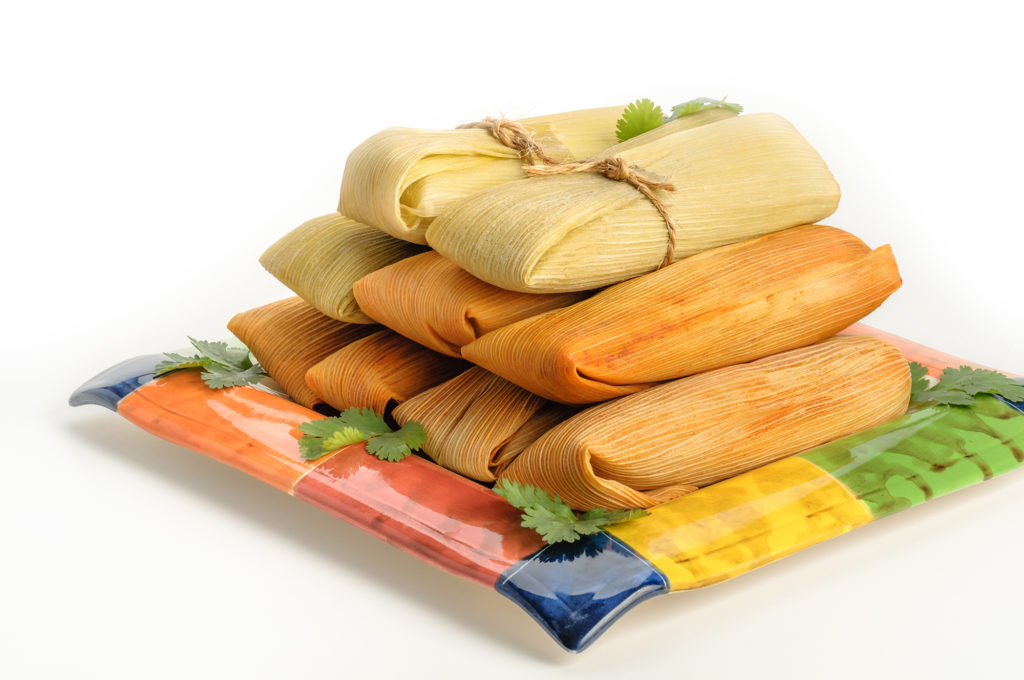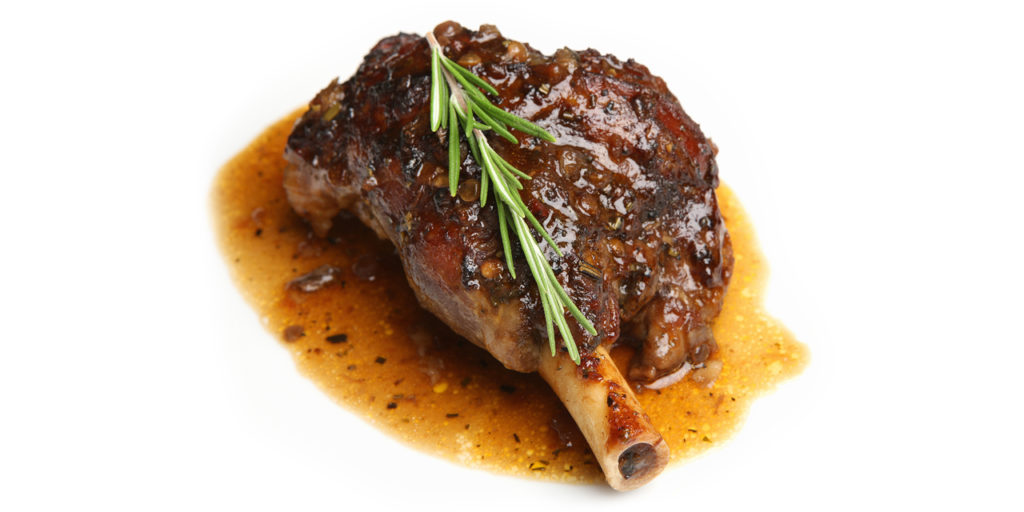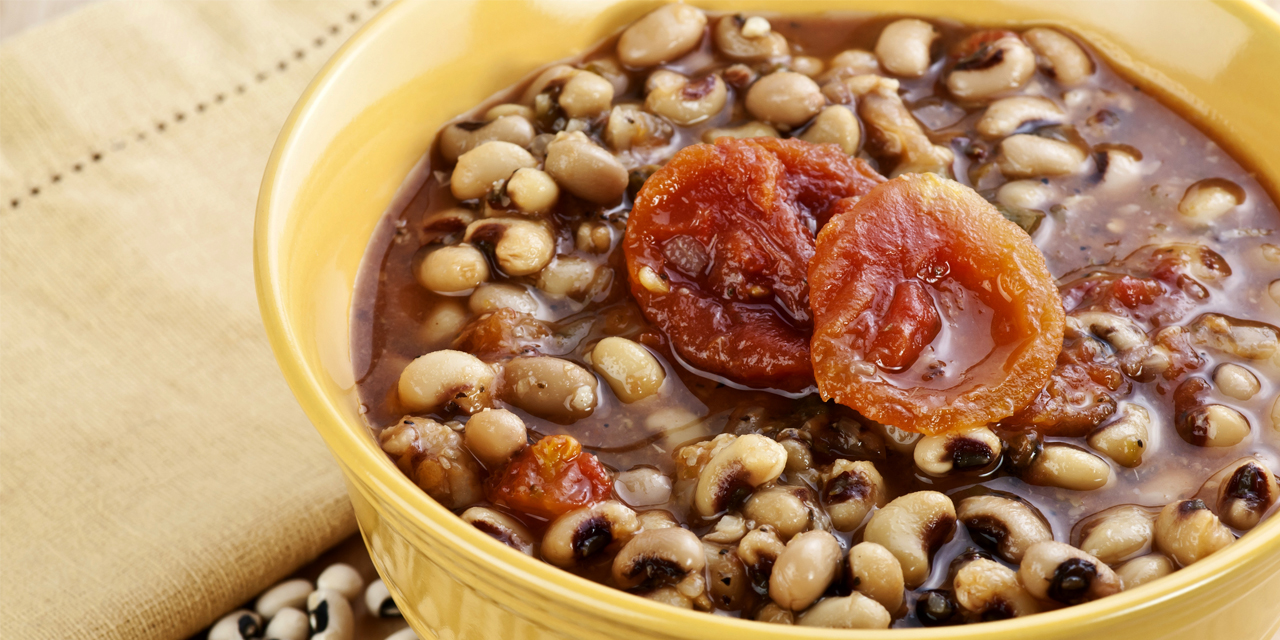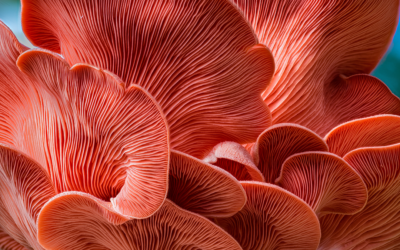By Malini Bartels
Around the world, New Year’s Day is celebrated with food, friends, champagne and the hope for good fortune.
We all want the best for our loved ones and ourselves, so a little food that’s said to bring good luck in the New Year can’t hurt.
Ring-shaped or round foods are customarily eaten all over the globe on January 1 because of their symbolic shape. It is said that a completed circle is evidence that the year has run its course. Circles are also the shape of coins, so it’s no wonder that foods that resemble money are enjoyed worldwide as a hope for good fortune in the upcoming year.
We are familiar with the American tradition of eating black-eyed peas and collard greens; a practice that originated in the Southern states because the dish looks like money (the peas as coins and the greens as bills), inviting the promise of wealth for those who consume it. This belief is practiced all throughout the world. In Italy, lentils of all varieties are served for the New Year with the belief that they will bring prosperity since they resemble little coins. An actual coin is baked into “vasilopita” sweet bread in Greece, with the promise of good fortune for the one who finds it. Similarly, an almond is hidden in rice pudding in Scandinavia.
Another common tradition throughout the world is eating grapes. The tradition of eating one grape for every strike of the clock at midnight is practiced globally. If the 12 grapes are not eaten, you may be jinxing yourself for an entire year.
According to Trish O’Neill, owner of The Cooking Studio in Old Town Fort Collins, eating special food for the New Year reminds us of who we are, where we’ve been and where we want to go.
“Sharing is the key,” says O’Neill. “All food tastes better when shared with family and friends.”
In fact, in Mexico, the eating of tamales is customary not for its symbolism, but for the fact that they are created by a group. There is nothing more fortuitous than bringing people together at the beginning of the year to enjoy food and toast a new beginning.
In Japan, it’s customary to eat buckwheat noodles called soba at midnight on December 31. Noodles symbolize longevity and the crossover from one year to another, so the longer they are, the better for your luck in the coming year!
With this in mind, here are a few recipes to see you through a happy New Year!
Spicy Black-Eyed Peas
Serves 8
Recipe courtesy of Julie Spencer, NOCO Style staffer
Ingredients
6 cups water
1 pound dried black-eyed peas, sorted and rinsed
1 onion, diced
2 cloves garlic, minced
1 red bell pepper, seeded, stemmed and diced
1 jalapeño pepper, seeded and diced
8 ounces diced ham
4 slices bacon, chopped
½ teaspoon cayenne pepper (more or less for spiciness)
1½ teaspoons cumin
1 teaspoon ground black pepper
Directions
Pour water into a slow cooker. Add the black-eyed peas, onion, garlic, bell pepper, jalapeño, ham, bacon, cayenne pepper, cumin, salt and pepper; stir to blend. Cover the slow cooker and cook on low for six to eight hours until the beans are tender. Serve with collard, turnip or mustard greens and cornbread: “Peas for pennies, greens for dollars and cornbread for gold.”

Traditional Mexican Tamales
Servings: 26 (perfect for making in an assembly line with a large group)
Recipe courtesy of The Cooking Studio Fort Collins, adapted from Rick Bayless
Ingredients
1 8-ounce package dried cornhusks
10 ounces (1⅓ cups) rich-tasting pork lard (or vegetable shortening if you wish),
slightly softened but not at all runny
1 ½ teaspoons baking powder
2 pounds (4 cups) fresh coarse-ground corn masa for tamales
OR 3 ½ cups dried masa harina for tamales mixed with 2¼ cups hot water
1 to 1 ½ cups chicken broth
2 ½ to 3 cups pork in red chile filling or chicken in green chile filling
Directions
1. To prepare the cornhusks: Cover the husks with very hot water, weight with a plate to keep them submerged, and let stand for a couple of hours until the husks are pliable. For forming the tamales, separate out 28 of the largest and most pliable husks—ones that are at least 6 inches across on the wider end and 6 or 7 inches long. Pat the chosen husks dry with a towel.
2. Prepare the batter: With an electric mixer on medium-high speed, beat the lard or shortening with 2 teaspoons salt and the baking powder until light in texture, about 1 minute. Continue beating as you add the masa (fresh or reconstituted). Reduce the speed to medium-low and add 1 cup of the broth. Continue beating for another minute or so, until a ½ teaspoon dollop of the batter floats in a cup of cold water (if it floats you can be sure the tamales will be tender and light). Beat in enough of the remaining ½ cup of broth to give the mixture the consistency of soft (not runny) cake batter; it should hold its shape in a spoon. Taste the batter and season with additional salt if needed. For the lightest textured tamales, refrigerate the batter for an hour or so, then re-beat, adding a little more broth or water to bring the mixture to the soft consistency it had before.
3. Set up the steamer: Steaming 26 husk-wrapped tamales can be done in batches in a collapsible vegetable steamer set into a large, deep saucepan. It is best to line the rack or upper part of the steamer with leftover cornhusks to protect the tamales from direct contact with the steam and to add more flavor. Make sure to leave tiny spaces between the husks so condensing steam can drain off.
4. Form the tamales: Cut 26 8- to 10-inch pieces of string or thin strips of cornhusks. One at a time, form the tamales: Lay out one of your chosen cornhusks with the tapered end toward you. Spread about ¼ cup of the batter into about a 4-inch square, leaving at least a 1½-inch border on the side toward you and a ¾-inch border along the other sides (with large husks, the borders will be much bigger). Spoon about 1½ tablespoons of the filling down the center of the batter. Pick up the two long sides of the cornhusk and bring them together (this will cause the batter to surround the filling). Next, fold up the empty 1½-inch section of the husk (to form a tightly closed “bottom,” leaving the top open), and secure it in place by loosely tying one of the strings or strips of husk around the tamale. As they’re made, stand the tamales on their folded bottoms in the prepared steamer. Don’t tie the tamales too tightly or pack them too closely in the steamer, give them room to expand.
5. Steam and serve the tamales. When all the tamales are in the steamer, cover them with a layer of leftover cornhusks; if your husk-wrapped tamales don’t take up the entire steamer, fill in the open spaces with loosely wadded aluminum foil (to keep the tamales from falling over). Set the lid in place and steam over a constant medium heat for about 1¼ hours. Watch carefully that all the water doesn’t boil away and, to keep the steam steady, pour boiling water into the pot when more is necessary. Tamales are done when the husk peels away from the masa easily. Let tamales stand in the steamer and turn off the heat. For the best textured tamales, let them cool completely, then re-steam about 15 minutes to heat through.

Holiday Lamb Shanks With Creamy Polenta and Warmed Olives
Recipe courtesy of Matt Smith, Executive Chef at Door 222, Loveland
Ingredients
6 lamb shanks
salt and pepper to taste
2 tablespoons olive oil
2 onions, chopped
3 large carrots, cut into 1-inch rounds
10 cloves garlic, peeled
1 (750 milliliter) bottle red wine
1 (28 ounce) can whole peeled tomatoes with juice
1 (10.5 ounce) can condensed chicken broth
1 (10.5 ounce) can beef broth
5 teaspoons chopped fresh rosemary
2 teaspoons chopped fresh thyme
Prep Time: 30 minutes
Cook: 2 hours 30 minutes
Preheat the oven to 350ºF
Directions
Put the leaves from two sprigs of rosemary and thyme into a food processor. Season with sea salt and black pepper, then blend together.
Peel and slice the carrots and onion into 1-inch pieces.
Rub shanks with herb butter. Put vegetables, garlic and oil in roasting pan. Add shanks on top of vegetables. Roast in oven for 25 minutes or until golden. Add wine, stocks and canned tomato. Cover tightly with foil. Place back in oven and cook for two more hours.
Let cool in liquid, reserve shanks and strain cooking liquid. To reheat shanks, add shanks and cooking liquid to a pot. Reduce liquid while reheating shanks. Serve with creamy polenta and warmed pitted olives. Finish by pouring reduced cooking liquid over the shanks
Creamy Polenta
Ingredients
4 cups water
1 ½ teaspoons salt
1 cup medium-grain yellow polenta
2 tablespoons butter
¼ cup cream cheese
Directions
1. Heat salted water (1½ teaspoons of salt for 1 quart of water) to a boil over high heat in a thick-bottomed 2- or 3-quart pan, about five minutes. Quickly whisk in the polenta until fully mixed.
2. Lower the heat to a very low simmer, add the butter and allow the polenta to cook, stirring occasionally so it doesn’t stick to the bottom of the pan, for 25 minutes.
3. Finish by stirring in the cream cheese until it has melted into the polenta. Taste and add more salt if necessary.
Malini Bartels is a lifelong creative working at the Music District. She is also a freelance writer, chef, mother, radio host and actress. To comment on this article, send an email to letters@nocostyle.com.






